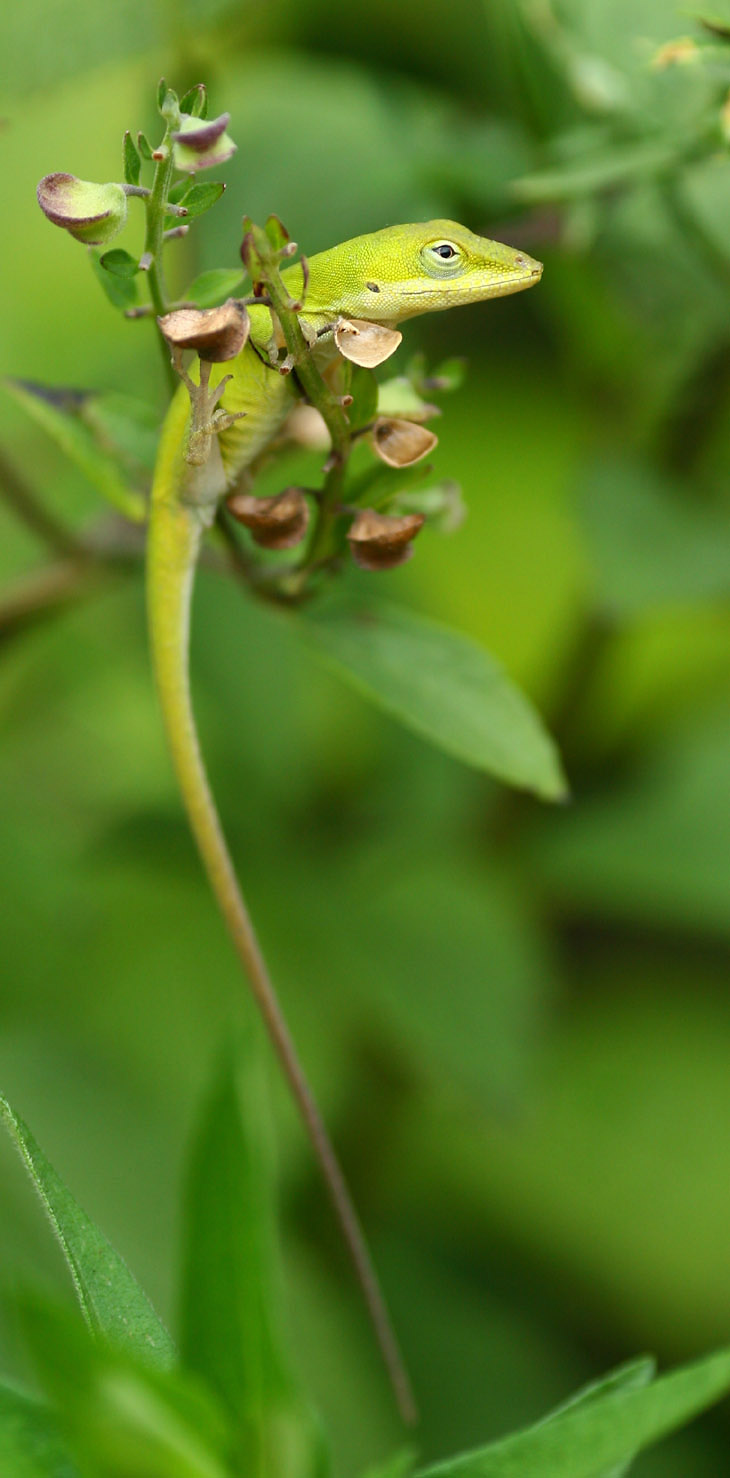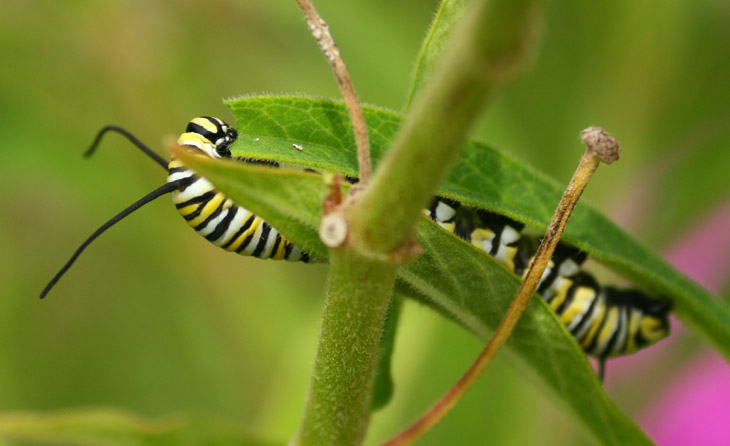
I did almost no shooting this week, but made up for it a little on Saturday when I had two students, though all of these images came from the second session. This month will be a new record for images uploaded, mostly because of this post, but there may still be more.
The opening image is a monarch butterfly caterpillar (Danaus plexippus,) the first I think I’ve seen around here, and one of two immediately visible in the UNC Botanical Garden. From the size, both were probably not far from forming a chrysalis, so I may be making more frequent trips out there to keep an eye on things, since this is one species I would desperately like to have a sequence of, given that the chrysalis is transparent and you can watch the colors develop from pale blue pupa (don’t ask me why this happens from a caterpillar of this color) into the orange and black of the adult butterfly.
[I have to note this as meaningless trivia. I often name my images something goofy and/or punny, partially because it helps me find them faster; this one was originally going to be named “MonarchMeal.jpg” before I realized that “FitForAKing.jpg” was the same thing but better. Moving on…]
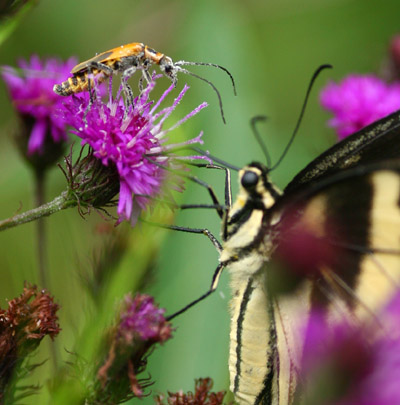 Here, a very-common eastern tiger swallowtail butterfly (Papilio glaucus) finds that its targeted nectar producer is already occupied by a variety of Chauliognathus beetle, probably one of the leatherwing species and also extremely common – I had no idea it was there when I leaned in to snag the butterfly as it landed. Chauliognathus can be found all over the place around here, and nothing seems to want to eat them – I have seen them openly ignored by mantids, lynx spiders, and assassin bugs. BugGuide.net had no mention of defenses, but the beetles do indeed have a way of deterring predators, a milky acid secreted on demand, though whether this is irritating or simply bad-tasting I cannot say. With enough upvotes (see the button below) I’ll pop one in my mouth and find out directly…
Here, a very-common eastern tiger swallowtail butterfly (Papilio glaucus) finds that its targeted nectar producer is already occupied by a variety of Chauliognathus beetle, probably one of the leatherwing species and also extremely common – I had no idea it was there when I leaned in to snag the butterfly as it landed. Chauliognathus can be found all over the place around here, and nothing seems to want to eat them – I have seen them openly ignored by mantids, lynx spiders, and assassin bugs. BugGuide.net had no mention of defenses, but the beetles do indeed have a way of deterring predators, a milky acid secreted on demand, though whether this is irritating or simply bad-tasting I cannot say. With enough upvotes (see the button below) I’ll pop one in my mouth and find out directly…
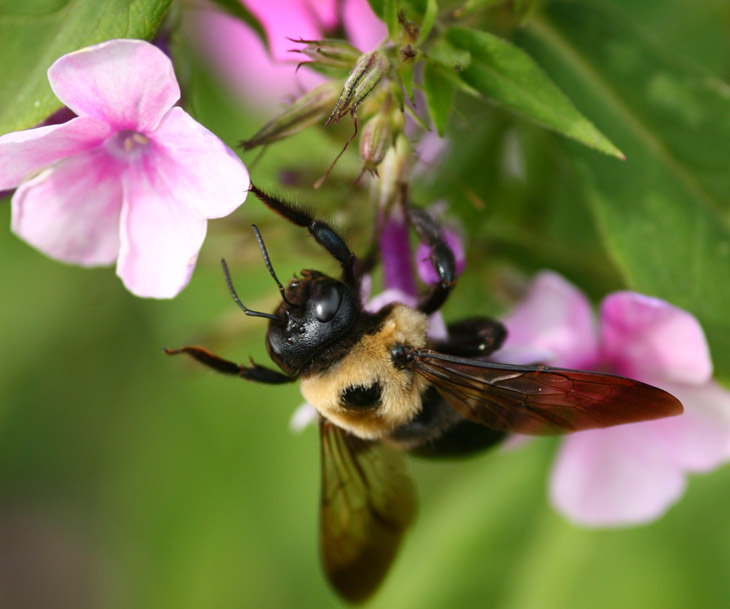
There have been quite a few Hemaris to be found this summer, which is very cool, but that’s not what this is. When the one I was following flew off, I switched over to the bumblebees raiding the flowers. This one just caught my attention as I was sorting images – it seemed so delighted to find another blossom waiting for it. Look – it even appears like its mouth is open, though they don’t actually have one that we would recognize.
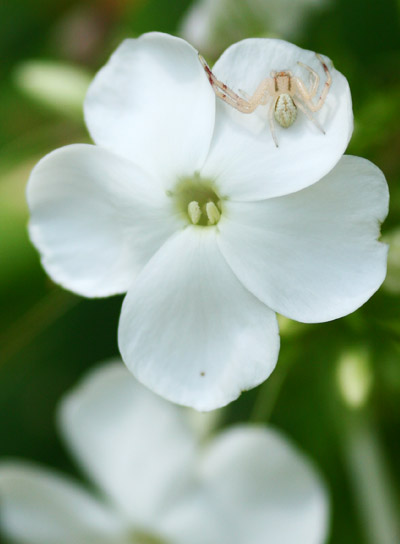 Given the lack of flowers in my immediate area, I’ve been planning on hunting down the crab spiders when I returned to the botanical garden, since it’s the only place with the yellow and white flowers that the crab spiders seem to prefer. As you can see here, I was successful, but not exactly as intended; I had planned for something a bit bigger. I didn’t go for the really detailed closeups – as I said earlier, that requires a lighting rig that I don’t lug around when I’m out with a student – but I’m going to take a stab at this being a Mecaphesa anyway.
Given the lack of flowers in my immediate area, I’ve been planning on hunting down the crab spiders when I returned to the botanical garden, since it’s the only place with the yellow and white flowers that the crab spiders seem to prefer. As you can see here, I was successful, but not exactly as intended; I had planned for something a bit bigger. I didn’t go for the really detailed closeups – as I said earlier, that requires a lighting rig that I don’t lug around when I’m out with a student – but I’m going to take a stab at this being a Mecaphesa anyway.
Overall, spiders seem to be relatively scarce this year, and I can’t say why – I’m inclined to blame the harsh winter that we had, which they’re not used to in this area, but that’s only an uneducated guess. Long before this time last year I had found several sizable specimens, including wolf spiders laden with their young, but have barely seen any this year. In my experience, however, arthropod species seem to have preferred seasons; one year the ladybeetles were prolific and the following year almost unseen. This year the mantids seemed to hatch very late. It may have a lot to do with what weather conditions exist at certain times, like during egg-laying and birthing season.
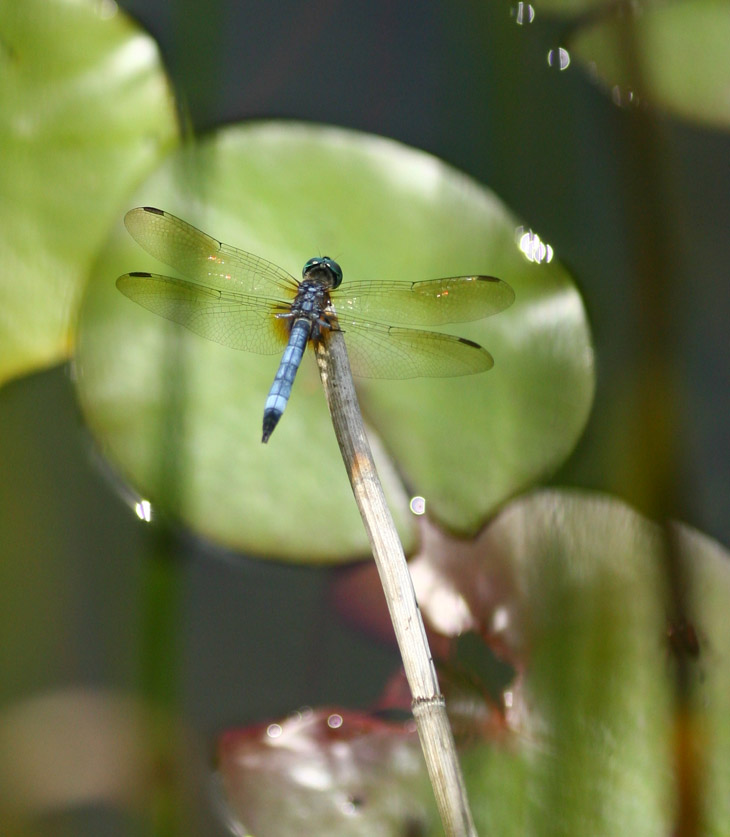
I went bigger for this one, since the wing detail wasn’t showing well in smaller versions – this is a blue dasher (Pachydiplax longipennis.) Dragonflies aren’t really hard to photograph, but doing something interesting with them is preferred. Here I experimented with shooting through a gap in the nearby reeds while centering the Odonata against a lily pad – the reeds are so far out of focus that they nearly vanish, but have some interesting effects with the specular highlights from the water anyway. The reeds are directly between me and the wings on both sides, but don’t really block the view at all – see this page for an explanation of how this occurs. This was tighter crop of a larger frame, and can be re-framed any number of ways, one of the benefits of shooting a bit wider.
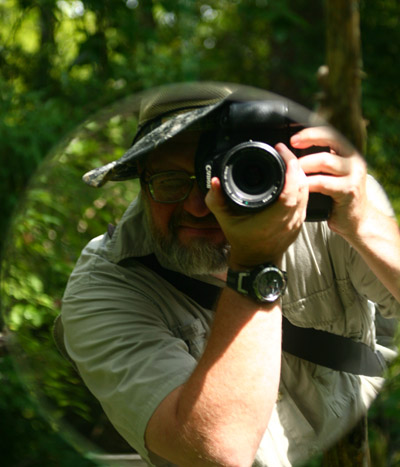 Another experiment, a gruesome one. At one point in the garden was an art installation that featured several round mirrors dangling from monofilament, twisting gently, and I crouched down and timed the rotation to snag a self-portrait. The focus is a little off, with good reason: when shooting a reflection, you are not focusing onto the surface that is reflecting, but past it all the way to the subject, the entire light distance. With a spinning mirror, however, there is only a fraction of a second when the distance is correct, too little time to snag autofocus, much less the manual focus I was using with this lens, so it’s actually surprising (to me, anyway) that it came out this well. I like the surreal aspect of it with the defocused edges of the mirror, done with no tricks at all, but don’t worry – it’s not going to be the end-of-month abstract shot.
Another experiment, a gruesome one. At one point in the garden was an art installation that featured several round mirrors dangling from monofilament, twisting gently, and I crouched down and timed the rotation to snag a self-portrait. The focus is a little off, with good reason: when shooting a reflection, you are not focusing onto the surface that is reflecting, but past it all the way to the subject, the entire light distance. With a spinning mirror, however, there is only a fraction of a second when the distance is correct, too little time to snag autofocus, much less the manual focus I was using with this lens, so it’s actually surprising (to me, anyway) that it came out this well. I like the surreal aspect of it with the defocused edges of the mirror, done with no tricks at all, but don’t worry – it’s not going to be the end-of-month abstract shot.
To make up for doing that to you, however, I offer the image below. The session was almost up, and I was lamenting that I had not seen any green anoles (Anolis carolinensis) at all, even though I was expressly keeping my eyes open for them because the garden is a favored habitat of theirs. And then, with two minutes to spare, this little specimen was found, posed fetchingly on a plant with its long (and surprisingly intact) tail hanging down. Even this big on the blog isn’t doing it justice, and I like how the toes are maintaining a negligent grip on its perch. I can only guess that it had just leapt to this locale from elsewhere, though I did not see or hear this occur, and only the gentle swinging of its tail alerted me to its presence. I’m pleased with it.
